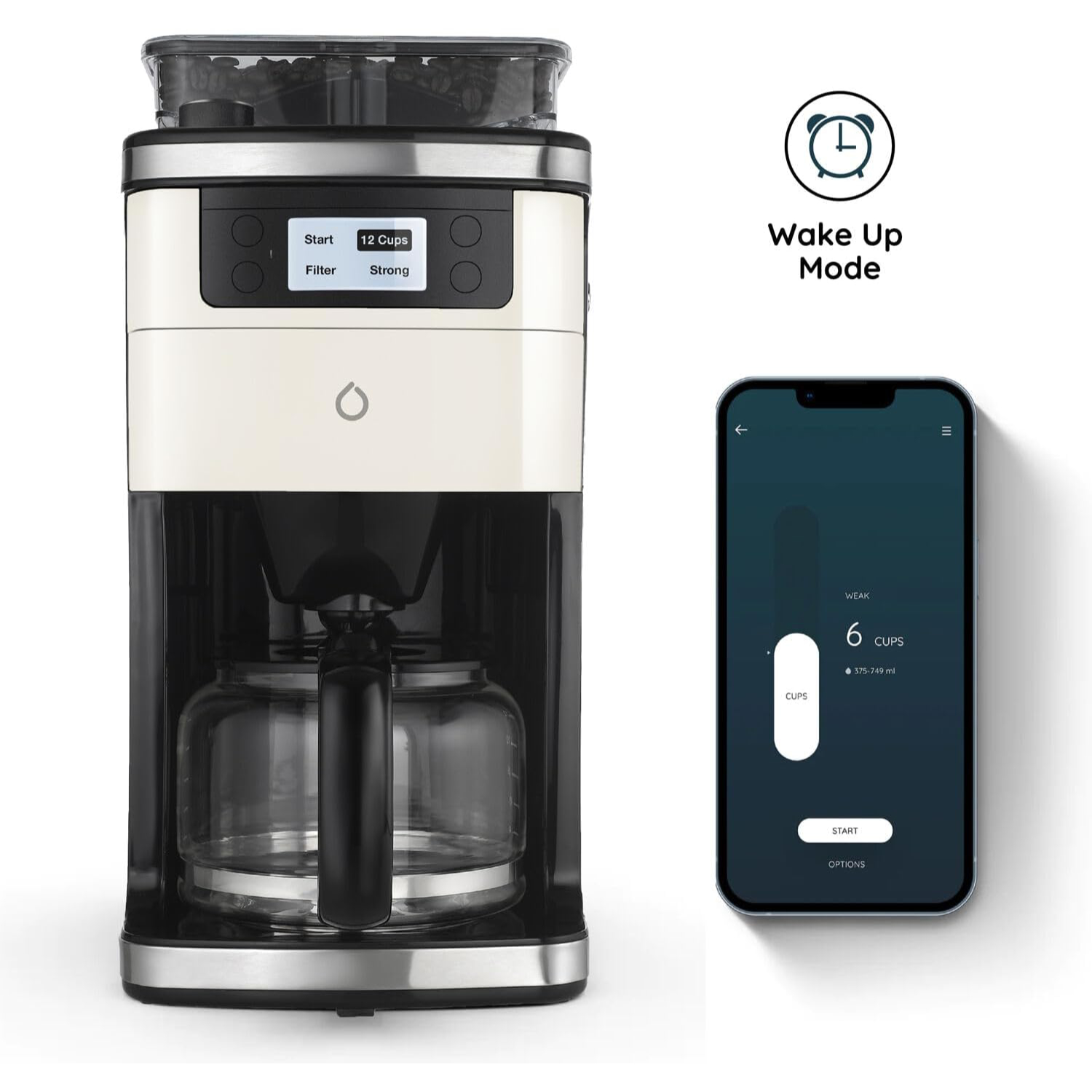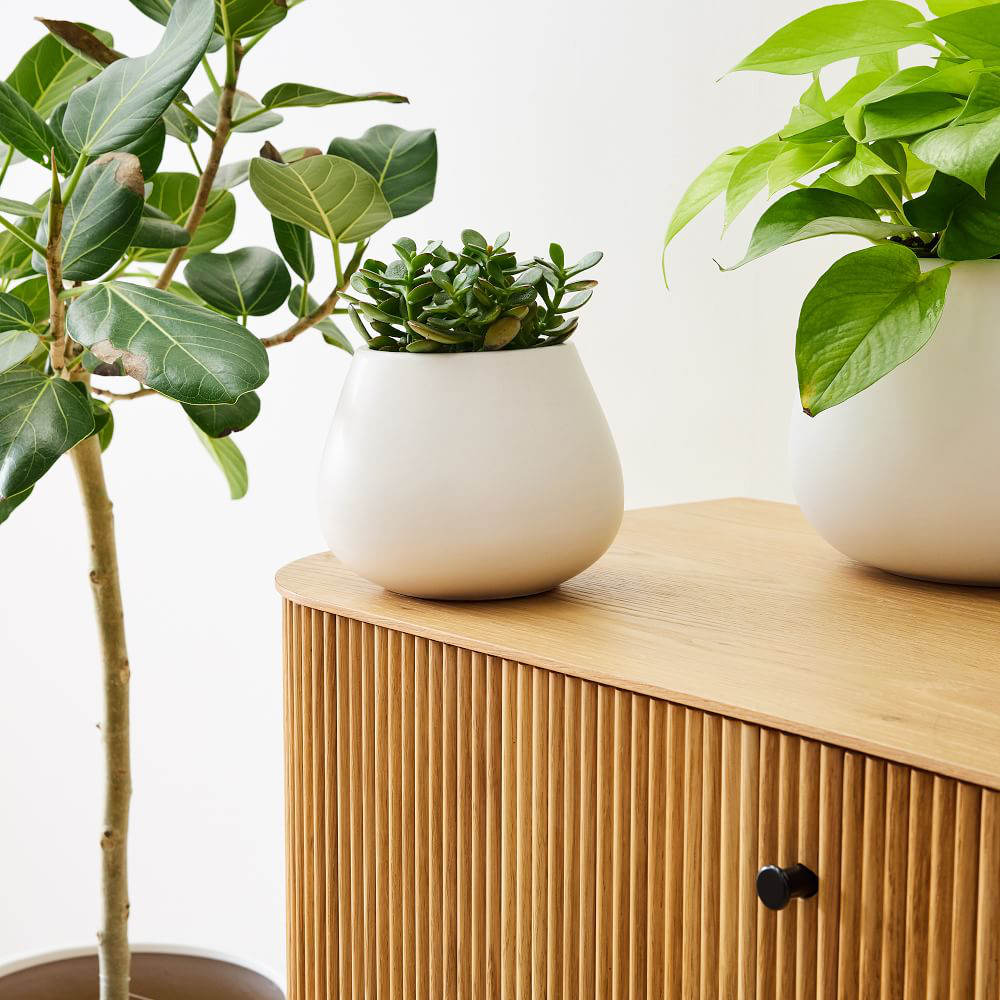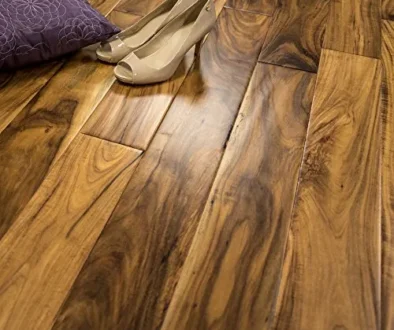DIY Solar Hot Air Heaters: Solar air collectors to complement your home heating system
With increasing fuel and energy bills, it is worth considering alternatives or ways to help reduce heating bills. What better way to do this than with these DIY hot air collectors. Even on a cloudy day, these solar air heaters perform surprisingly well and are definitely worth checking out. Here are your best options in one place.
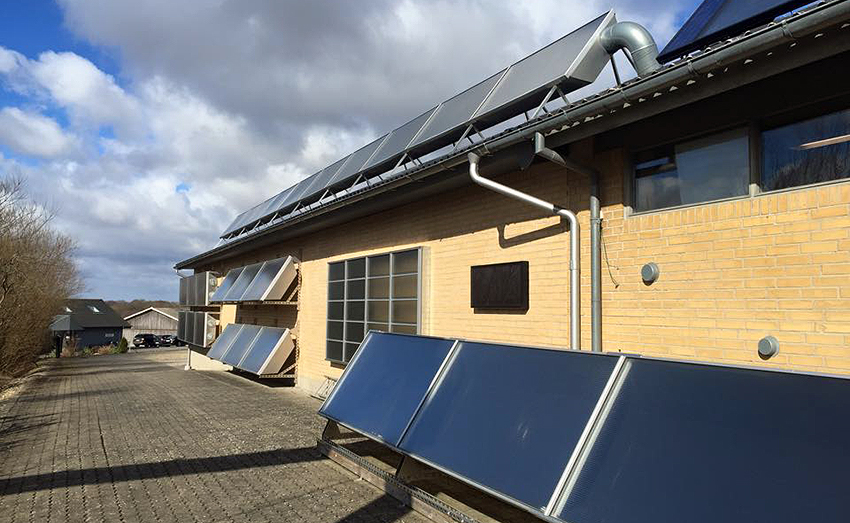
Solar Air Heaters or Solar Hot Air Collectors
It is common to find solar water heaters, but there are also solar air heaters, sometimes known as solar hot air collectors. These use the same concept of trapping light and absorbing heat from the sun and through convection or with an electric fan, pumps hot air out. Of courses, solar hot air collectors are not new. There are many different commercial options and designs out there. This only goes to show that they are a viable option as a heat source for your home.
There are several types of solar air heaters as listed below:
- unglazed solar collectors,
- glazed solar collector,
- perforated solar collector and
- a hybrid system with hot air and photovoltaic electric generator.
There is also a two stage unglazed and glazed perforated panel where the bottom half is unglazed and perforated for air intake and the top half heats up the air before letting it into the building. We will be looking at both external and internally circulated and glazed solar air heaters. They collect cold air from outside or within the room or building respectively, heats it up externally using a wall mounted unit with help from the sun, then pushes hot air into the house.
Depending on the efficiency and design, a good solar air heater can boost the temperature between 5 to 40C compared to outdoor temperature. For units that takes in fresh air from the outside, it even help increase ventilation, replacing stale air inside the house and decrease humidity.
Can I buy them off-the-shelf?
As we mentioned earlier, there are commercial units that you can buy but what better way to learn about convection and radiation than to build your own solar hot air collector. Plus, you can custom build it to size and specification to fit to any available surfaces on the wall while keeping the cost low to zero depending on the materials or repurposed parts used. However, if you would rather not get your hands dirty, a simple search for solar hot air heater on Amazon will yield some interesting results.
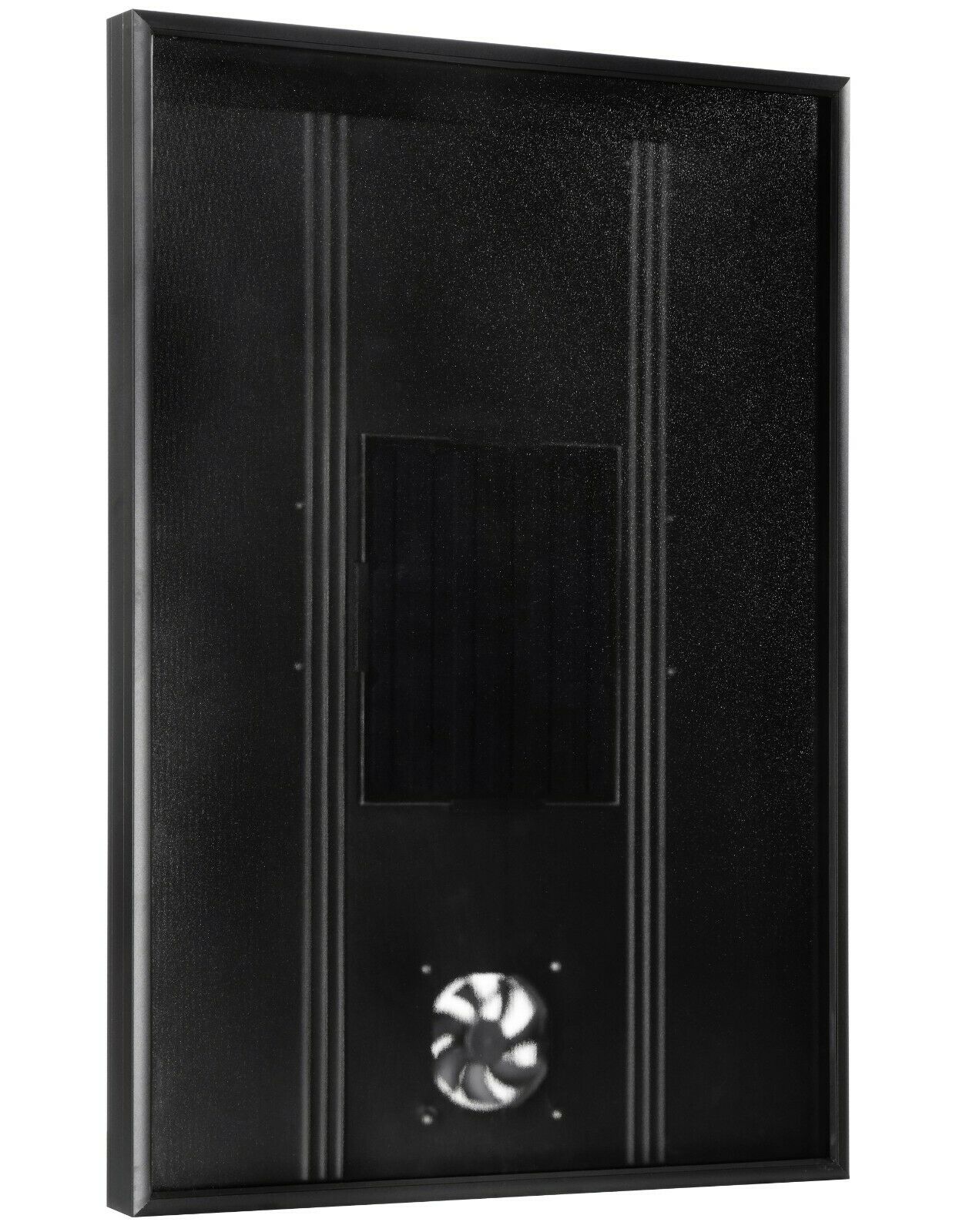
Still not convinced, here are some advantages and disadvantages of Solar Air Heaters / Collectors and what is typically involved in its installation.
Advantages
- Units are wall mounted and therefore have virtually zero footprint.
- They do not require power to run. With actively exhausted models, these come with a solar panel to power the electric exhaust fan to blow the hot air out when there is sunlight
- They will generate heat for free using energy from the sun so there is no running costs or bills to pay
- Solar air heaters are fairly low maintenance
Disadvantages
- Units need to be wall mounted on a south facing wall for optimum performance. Some may not like the way it looks.
- They require a fairly large surface on the wall to capture sufficient sunlight and generate enough heat. For a big home, you are looking at a large installation or multiple units.
- The performance of these solar air heaters vary based on the weather. They will work tremendously well on a clear day but not so great on a cloudy or dark day.
- As they only work during the day when there is sunlight, you will still need to rely on electric or fuel based heating system for the evening.
Installation
Unless you design a window mounted unit, you will need to drill holes on the wall, one for air inlet and one for outlet for internally circulated units. This can be tricky for homes with stone or thick cavity walls. For solar hot air collectors that takes air from the outside, you can get away with one air inlet hole on the wall.
For internally circulated solar air heater, you will need to drill two quite large holes on the wall where you choose to install the unit. One for intake of indoor air, drawing cold air from the house into the bottom of the unit and the other for to exhaust hot air from the unit back into the house.
For solar air heater that collects fresh air from the outside, you will only need one hole on the wall to exhaust the hot air generated from the unit into the house. Cold fresh air enters the unit and passes through the heat absorber inside the unit. It does this with the help of a fan typically powered by a small solar panel. This exhaust fan pushes hot air into the house and reduces the pressure in the unit to allow fresh air from outside to be sucked in continuously at the other end.
Beyond the drilling of hole(s) on the wall, you will also need to think about securing the units to the wall. Fittings must be strong enough to carry the weight of the entire unit and keep it fixed to the wall under all outdoor conditions.
8 Best DIY Solar Hot Air Collectors / DIY Hot Air Heaters
Now that you know what it is, advantages, disadvantages and how to install one, here are 8 best DIY Hot Air Collectors we found online. These are made from materials you can source easily from the hardware shop, recycled and repurposed hardware and even everyday household items.
1. The “Screen Absorber” Solar Air Heater
With over 2 million views on YouTube and real results that you can see in the video, this easy to build DIY solar air heater gives you a quick introduction to the basic of hot air collector. The actively exhausted unit uses a DC fan powered by a solar panel. When the unit is deployed facing the sun, with the fan switched on, cold air moves in from the vents at the bottom. It then passes through a dual layer black metal screen heat absorber suspended inside the box.
This is termed as the screen absorber plate. The heat is of course supplied by the sunlight radiating through the plexi-glass into the unit and absorbed by the screen. As hot air rises, it reaches the top of the box where it is drawn out into a vent tube with the help of the fan. From the experiments, with and without the dual layer absorber screen inside, it can boost the temperature up to 137°F (58.3°C) with the screen and 109.5°F (43°C) without.
The creator, desertsun02 also designed a steel can heater and compared the two side-by-side in a separate video. He also created a third air heater using downspouts and compared that too, continue reading.
Another video that takes the black aluminium screen idea to the extreme with 4 layers of the heat absorber achieved 177°F (80.5°C) temperature from a 4 feet by 2 feet unit when the temperature near the intake is 58°F (14.4°C).
2. Homemade Steel Can Solar Air Heater
This is a more complex build with steel cans stacked on top of one another and then laid side by side to form columns of steel cans. There are altogether 7 columns in this design and cool air is fed from the bottom via a one inch diameter hole for each of the columns. The steel cans are recycled soup or vegetables cans cleaned, dried and spray painted with matt black spray paint. You will also need to puncture the bottom of the steel cans to let air through. The designer used a drill to make random small holes. Overall, the unit costs hardly anything to put together. From the video we can see that the steel can air heater can push hot air at temperatures up to 142.5F (61.38C) on a sunny day.
3. Steel Downspout Solar Air Heater
Here is a wild card, steel downspouts as heat absorbers. With the outside temperature and sun holding a constant 42C, this next steel downspout unit manages 139F (59.4C) when the steel can unit above can only achieve 129F (53.8C). That’s 10F more heat as shown in this comparison video. But here is how to build a DIY Solar Air Heater using Steel Down Spouts.
From the DIY video, you can see that the unit manages to warm air up to 141.5F (60.8C). Steel downspouts are cut to length, spray painted and placed side-by-side in a vertical formation. Air intake holes are added at the bottom where each downspout meets the bottom of the case.
A metal mesh is applied to the exterior at the bottom of the unit to stop insects or debris from entering the unit. While the creator usually adds multiple layers of card board as insulation for the interior wall of the unit, for this build, he has decided not to do so. Reasons will be revealed in the next video.
4. Steel Slat “Drip-Edge” Solar Air Heater
You know you are on to something when you get over 2 million views from your DIY videos. Here is yet another desertsun02 video with Solar Air Heater, this time using Drip Edge steel slats. These are dual faceted roof flashing cut to length and glued to the case arranged vertically. For this design, there are 7 slats, each with up to 2 air intake holes at the bottom edge of the box. It can warm up outside air from low 40C to over 160F (74C).
This is also the video where the creator first concluded that insulation for the box is actually unnecessary. The wooden box itself is a rather good insulator, keeping the heat inside. He goes on to recommend insulation for the back panel as the board used is rather thin and has the greatest surface area where heat might escape. Remember, the idea of insulation is to stop heat loss.
5. Solar Cans Solar Heater by Peter Rowan
Perhaps the biggest solar panel installation we found is this from Peter Rowan, measuring 4 feet wide by 8 feet high. It is designed to supply heat for an outbuilding. The unit is made from aluminium cans, with holes cut out at the bottom and glued on top of each other. It has the same idea as the steel can model above, except there are 16 columns and the fan is used to suck cold air from inside the house into the unit. Peter tried to put the unit on the roof but as hot air rises through convection, the heat wasn’t getting into the house. As a fix, the panel is hinged and mounted to the wall.
6. Solar Air Heater Designs and Construction (3 prototypes)
For this next video, you see three prototypes. The first of these uses dryer vent ducting. It sucks cold air from inside the house, heats it up and pushes the hot air back into the house to raise the temperature up to 27C/28C. It does this when the outside temperature is -15C on a sunny day. The second prototype is based on the same tube vents but as one continuous length snaking inside the box using a horizontal design. That also raises the indoor temperature up to 27C in the living room.
The third prototype uses aluminium down spouts with a double pass design. Air comes in from the top via the intake fan, circles behind the spouts until it reaches the bottom before entering the spouts and moves up again via convection and back into the room. This manages to increase the air temperature up to 41.4C. Also, backdraft dampers/shutters with louvres are used to stop cold air from coming back into the house. It will open when the fan kicks, blowing air into the box and closes when the fan is not operating. The designer concludes that the downpipes dual pass design is the best among the three prototypes.
7. Thermal Panel Solar Furnace (one continuous air channel)
You might be wondering if a single air channel works better than the multiple channel designs that we have seen so far. Here is a good example, a thermal panel solar furnace based on a 10 meter slinky aluminium duct reinforced with steel coils as heat absorber. The logic of using the slinky is that it has a larger surface area to absorb heat from the sun and to heat up the air inside the tube. The box is made from insulation boards used in construction of cavity walls to begin with. A wooden box is then built to enclose it for rigidity.
For glazing, a real glass window frame is used and for air circulation, an electric blower fan powered by a solar panel. Using digital temperature probes, one at either end of the slinky, the designer showed that the unit was able to boost the temperature of the air entering it at 17.2C to 39.5C. As a professional engineer, he also did the sums and it showed that that with the measured flow rate / air speed, it is a 565W heater.
8. Home built passive solar air heater (large scale installation)
This next project is not quite a DIY system. It is designed and built by actual builders and professionals. This large scale passive solar air heater is custom built to be mounted on the south facing wall of a building. It does not use any fan and relies solely on convection current.
Cold air is sucked from the inside the house into the bottom of the unit. It is then passed through heat absorbers that gets its heat from sunlight. Once warmed up, the air rises to the top of the unit where it gets pushed back into the house. This caused the pressure at the bottom of the unit to be lowered. Cold air again comes in to replace it, creating a continuous air cycle.
As for the heat absorbing material, it used nothing but a single suspended sheet of black aluminium screen typically used for windows. Five independent units are installed side-by-side each with its own intake and outlet valves. For the front of these 5 units, clear corrugated polycarbonate roof panels are used to cover them. These are fixed to the frame securely to ensure that the boxes are air tight.
BONUS: My Solar Furnace Self Standing Solar Air Heater
For starters, this is not a DIY video. It doesn’t actually show you how to build the solar air heater, just the explanation of the end result. But, you get the ideas from all the videos above. Like number 8, this is a large scale installation what the designer calls a Solar Furnace. It is a standalone air heater that sucks air in from the house using insulated and water tight intake pipes. The air then snakes around the heat absorbers until it reaches the top and gets pushed back into the house using a similar pipe. An electric fan is used to circulate the air. The result is 127-130F warm air on a sunny day. For the heat absorbing material, I can only guess that it uses aluminium roofing sheets painted in black.
Final Thoughts
To summarise, you will need to fashion a sealed box with a see-through window up front to act as a green house. This box will allow light in to heat up the thermal absorber inside. Depending on the material used to construct said box, you need to consider insulating it to stop heat from escaping. Next, you need to decide on the type of heat absorber to use. This can be one of the following:
- black aluminium screens
- tin cans
- aluminum cans
- steel downspout pipes
- black metal roofing sheets
- slinky metal vent ducts
- galvanised steel roofing sheets
- polyester felt
Then there is the actual window itself. You can use one of the following:
- clear glass
- clear polycarbonate plastic
- clear corrugated polycarbonate roofing
- clear twin wall polycarbonate roofing sheet
Other parts and materials you may need are:
- Black stove or high temperature black matt paint
- polyurethane insulation silver board
- high heat transparent silicone sealant
- pipes and fittings for air inlet and outlet
- DC fan and small PV solar panel to power it
- one way air vent louvre to stop cold air flowing into the house
The important thing is to make sure that the box is air tight especially for internally circulated model. This will force the air to follow in one direction either passively through convection or actively with a PV powered fan. Cold air goes in and hot air comes out. Do share with us below if you come across any other designs or have designed one yourself.

